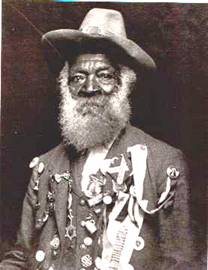Implications of Colored Service
It is important to emphasize the implications of the number of blacks fighting for the South, as it illuminates the main reason for controversy. Those promoting a large number of black Southern combatants say that this has wide-ranging consequences for the way the antebellum South is viewed. Kennedy and Kennedy are hardly defenders of reconciliation, but they deliver, in their neo-Confederate The South Was Right! a blunt example. When writing that with the accounts of blacks fighting for the Confederacy, they contend,
 "how can anyone continue to believe the myth that Southern
blacks were longing for Yankee-induced freedom? How can
anyone continue to accept the Yankee Abolitionist view of a
hate-filled and evil South? The truth is that life in the
Old South was very different from that which the
'politically correct' historians would have us believe.
Yes, there are many blacks who fought for the South."(39)
"how can anyone continue to believe the myth that Southern
blacks were longing for Yankee-induced freedom? How can
anyone continue to accept the Yankee Abolitionist view of a
hate-filled and evil South? The truth is that life in the
Old South was very different from that which the
'politically correct' historians would have us believe.
Yes, there are many blacks who fought for the South."(39)
Richard Rollins adds to this line of thought, asserting that "to imagine the Confederate armies without black Southerners in their ranks is to perpatuate the ahistorical myth of the South as a compartmentalized society."(40) In their eyes, blacks served the Cause that was Lost; in actuality, they serve the mythical Lost Cause of the South.
The more extrapolated arguments are easily dismantled when confronted by a variety of sources. There is the generally accepted number of 200,000 blacks serving on the side of the North, a number that pales its Confederate counterpart and the consequential conclusion that the Old South was a paradise for slaves. In addition, a systematic analysis of the 1930s Slave Narratives teaches one that black and white were indeed "divided into hostile camps" remeniscent of a "caste system," and that only 3 percent of interviewed slaves professed a genuine affection of their master.(41)
If the more extreme statements are brittle in the face of counter-arguments, the more general notion that blacks in the South did not constitute a monolithic entity may prove much more persistent, just as one should cautiously speak of "the South"-one need only consider the different motivations to secede between two states as close as North and South Carolina.(42) The number of slaves who did offer their service, insignificant though they seem, could indicate that there were different factions of blacks in the South, which would complicate the common notion of slavery in the antebellum.
